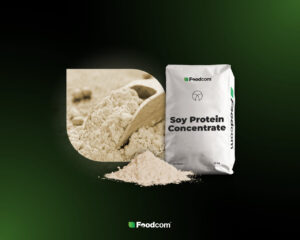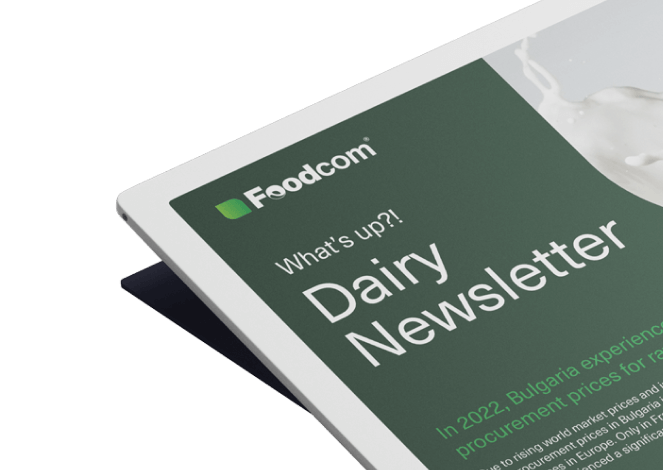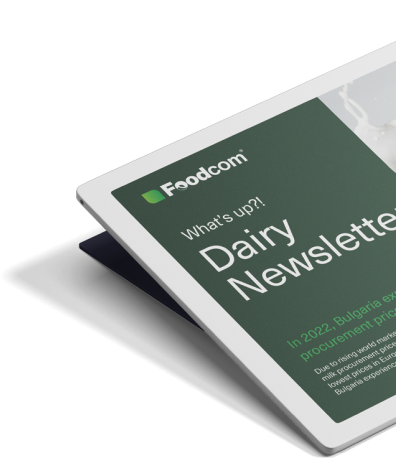- Record harvests have revalued the global soybean market and overturned the balance of power.
- China’s surprising purchases in Argentina have changed the rules of the game in trade.
- Importers are shortening contracts and responding to dynamic price fluctuations.
- Who will win the coming price war?
As recently as winter 2025, soybean prices remained high supported by limited supplies from South America, but the spring and summer harvests quickly changed this landscape. Record supply from Brazil and large volumes from the United States led to a sharp decline in prices, which reached levels not seen for several years. In September, an additional factor accelerating this process was China’s record purchases from Argentina, which reduced the traditional role of the US in this market. This development showed how quickly the balance can be tipped and how strongly the soybean market depends on Asian demand.
Market dynamics
The year 2025 saw the global soybean market see a marked decline in prices after the high levels at the end of the previous year. In January, the average price was EUR 396.65/MT. Supplies from South America were still limited and the United States remained the exporter with the largest share. In the following months, higher volumes from Brazil started to enter the market. China and the European Union accounted for the largest share of global imports.
In August, the average global soybean price was €349/MT. At the beginning of September, global market prices started to decline with increased availability of supplies from Brazil and are forecast to fall further in the coming weeks. The International Grains Council estimates the global soybean harvest for the 2025/26 season at 429 million tonnes, with global ending stocks falling to 124 million tonnes, indicating high production with strong feed consumption. The market is characterised by greater price volatility. Importers are reducing long-term contracts and increasingly opting for short trading windows.
Regional analysis of the butter market
Europe
Soybean imports into the European Union so far in the 2025/26 season totalled 2.67 million tonnes, down 4% year-on-year. The share of South American destinations is increasing in the supply structure, consistent with the record Brazilian supply in Q3.
The domestic supply forecast for 2025/26 was revised down by 0.2m tonnes in September. Harvested acreage in the EU has been revised to around 1.1m ha, and the lower expected yield maintains a strong reliance on imports in the feed segment. The CIF Rotterdam soybean meal price in August 2025 was around €354/MT, which raises the cost of blending feed in the EU poultry and pork sector.
North America
US soybean production for the 2025/26 season has been estimated at 117 million tonnes, of which almost 40% is destined for export. Ending stocks fall to 7.9m tonnes, signalling a tight balance sheet and a limited surplus in relation to strong global market demand. In August, the spot price of soya was around €374/MT and in September futures reached close to €933/MT, highlighting the scale of the difference between the physical and futures markets. China remains the main buyer, but greater availability of Brazilian supplies is limiting the dynamics of US sales.
Canada maintains stable production at 7 million tonnes, most of which goes to the domestic market. Its share of global trade remains limited and its export competitiveness low against the dominant South American and US suppliers.
Oceania
Australia remains a marginal player in the global soybean market. Production for the 2025/26 season has been estimated at 52,000 tonnes, which, with an area of 25,000 hectares and a yield of 2.08 t/ha, limits the country’s export potential. Volumes are too low to influence international trade, so the domestic market focuses on imports of feed components.
New Zealand does not play a significant role in soya bean trade and its balance sheet remains dominated by other agricultural sectors. In the region, imported soybean meal remains the most important benchmark for feed costs, with a CIF Rotterdam price of €354/MT in August 2025.
Asia
China remains the world’s largest buyer of soybeans in 2025, accounting for around 61% of global imports. The domestic harvest does not cover the market’s needs, so supplies from South America are growing in importance, with additional volumes also coming in from Argentina and Uruguay. This is reducing the US share of the Chinese trade balance.
In September, China contracted around 1.3 million tonnes of soybeans from Argentina, taking advantage of the temporary removal of the 26% export tax. The deals involved at least 10-15 cargoes of around 65,000 tonnes each, with delivery for November, a period traditionally handled by the US. Prices were set on a CNF basis with a premium of €79-85/MT over futures levels, further increasing the attractiveness of Argentine supply.
In Southeast Asian countries, demand for soybeans as a feed and oil base is increasing, particularly in Indonesia, Vietnam and the Philippines. Demand is supported by the development of poultry farming and the expansion of food processing. In India, the 2025 crop was lower than the year before, and most production goes to the domestic market, limiting export opportunities. Pakistan is increasing its consumption of protein components, but imports of soybean meal rather than seed are dominant.
Middle East and North Africa
This region remains heavily dependent on imports of soya, used primarily in the feed and oil industries. The main suppliers are Brazil and the United States, with the largest volumes going to Egypt, Turkey and Iran. Changes in global market prices are quickly reflected in the structure of purchases, as importers regularly modify their supply routes, selecting the most competitive suppliers.
Trends and forecasts
The most important development in the soybean market in 2025 is a reversal of the previous upward trend and a clear price correction. Record harvests in Brazil and the United States combined with limited uptake in China have led to lower quotations, and increased competition from exporters has further reinforced this movement.
A significant development is Argentina’s strong entry into the Chinese market. September purchases reaching 1.3 million tonnes show that Beijing is increasingly opting for South American supplies at the expense of the United States. Such a shift limits the chances of a rebound in US exports and strengthens price competition between exporters.
Three factors will determine the shape of the market in the coming quarters: the pace of sales from South America, demand in Asia with a particular focus on China, and US trade policy. Possible tariff barriers may change the direction of goods flows, which will have a significant impact on the global balance sheet.
Looking ahead to the coming seasons, the market may remain in a state of apparent equilibrium, in which ample supply from Brazil and the United States meets limited absorption from Asia. This configuration limits the possibility of a price rebound and is conducive to maintaining a competitive struggle for markets.
In the longer term, soybean consumption should grow primarily in Asia and Africa. However, the current price correction shows that market development will be volatile and soybean will remain vulnerable to economic changes and shifts in demand patterns.


Soybean prices are at a record low today, which completely changes the balance of power in the market. For many months, importers accepted high rates because they assumed that supply from South America would be limited. Meanwhile, record harvests in Brazil and the United States quickly verified these expectations and led to a correction in prices earlier than expected. In September, China’s purchases in Argentina were an important factor, as some of the orders that normally went to the US were redirected there. This shows that global soy trade is reacting very quickly to political and fiscal decisions, such as the temporary removal of the export tax in Argentina. We are now entering a stage of fierce price competition. Brazil, the US and Argentina will fight for every contract in Asian markets.
Foodcom S.A. global reports.
Curious about what’s next for soya? Discover the latest trends and insights that will shape the final months of 2025. Visit our blog as we regularly update our global reports. Stay up to date with Foodcom S.A.
![Soybean market overview [Global Report] Soybean market overview [Global Report]](https://foodcom.pl/wp-content/uploads/2025/10/global-report-butte-blogr.png)







